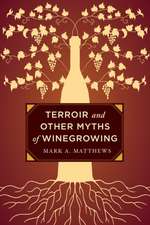Food Chemical Risk Analysis
Autor David R. Tennanten Limba Engleză Paperback – 4 oct 2011
| Toate formatele și edițiile | Preț | Express |
|---|---|---|
| Paperback (1) | 954.14 lei 6-8 săpt. | |
| Springer Us – 4 oct 2011 | 954.14 lei 6-8 săpt. | |
| Hardback (1) | 966.78 lei 6-8 săpt. | |
| Springer Us – 29 sep 1997 | 966.78 lei 6-8 săpt. |
Preț: 954.14 lei
Preț vechi: 1163.58 lei
-18% Nou
Puncte Express: 1431
Preț estimativ în valută:
182.60€ • 189.93$ • 150.74£
182.60€ • 189.93$ • 150.74£
Carte tipărită la comandă
Livrare economică 15-29 aprilie
Preluare comenzi: 021 569.72.76
Specificații
ISBN-13: 9781461284222
ISBN-10: 1461284228
Pagini: 500
Ilustrații: XXIV, 470 p.
Dimensiuni: 155 x 235 x 26 mm
Greutate: 0.69 kg
Ediția:Softcover reprint of the original 1st ed. 1997
Editura: Springer Us
Colecția Springer
Locul publicării:New York, NY, United States
ISBN-10: 1461284228
Pagini: 500
Ilustrații: XXIV, 470 p.
Dimensiuni: 155 x 235 x 26 mm
Greutate: 0.69 kg
Ediția:Softcover reprint of the original 1st ed. 1997
Editura: Springer Us
Colecția Springer
Locul publicării:New York, NY, United States
Public țintă
ResearchDescriere
Food Chemical Risk Analysis provides an introduction to the sciences of food chemistry and risk analysis and demonstrates how the potential hazards associated with food chemicals can be assessed and managed. Food scares are never far from the news and particular attention is therefore focused on the consumer perception of risk and risk communication. Leading international experts provide unique insights in the future of food chemical risk analysis. Chapters on alternatives to animal testing show how emerging methods offer the prospect of a more rational human-based approach to toxicity testing. Discussions about relative risks and protective factors highlight the possibility that risks from food can be over-estimated and approaches to avoid such risks are proposed. The science of risk management is presented as more than just a method for translating science into policy by demonstrating how social, psychological, economic ethical and other factors can, and should be taken into account. The book makes it clear that if risk communication is to be effective, an integrated approach to risk analysis must be adopted.
Cuprins
Introduction. Food Chemicals and Risk Analysis. Risk Assessment. Risk Assessment Framework Biomarkers in Epidemiological and Toxicological Nutrition Research. Expert Systems for Hazard Evaluation. Alternatives to Animal Testing. Risk Assessment: Molecular Modeling. Intakes Modeling. Assessing Risk to Infants and Children. Dietary Chemoprevention in Toxilogical Perspective. Priotization of Possible Caricnogenic Hazards in Food. Threshold of Regulation. An Approach to Understanding the Role in Human Health of Non-Nutrient Chemicals in Food. Risk Management. Risk Management Framework. Consumer Perceptions. Decision Aids. Risk Evaluation, Reduction, Control. Risk Communication Regulating Food-borne Risk. Conclusion. Integrated Risk Management













